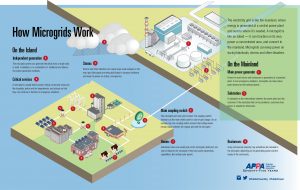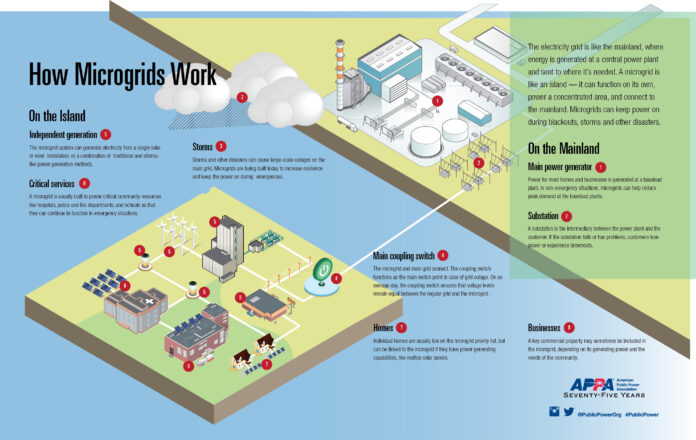
Does this story sound familiar? “The residents of _____ rely on a single radial powerline to deliver electricity through the forested, rural surroundings. Ice storms and heavy snowfall regularly knock that line down… ‘The traditional answer would be to build a redundant line to back up the one line if it goes out,’ said Charlotte Ancel, director of clean energy development at Eversource. ‘But we see this all the time in storms where the redundant line goes out, too.’ Instead, Ancel’s team proposed small- and large-scale energy storage to power up the entire community when the feeder goes down, and reduce bills at other times by lowering the town’s peak consumption.”1 This story is in Westmoreland, N.H., not Idaho, but we can follow their example for our own non-wires solution.
Here’s another community that faced a transmission-line dilemma: “Utility Arizona Public Service has contracted for a new grid-scale battery—not to demonstrate the technology, but because it’s a lot cheaper than the conventional alternative.
The company will purchase two 1-megawatt/4-megawatt-hour storage systems from APS for the small town of Punkin Center. This 600-person hamlet, 90 miles northeast of downtown Phoenix (and known for a bar with a prominent jack-o’-lantern sign), is bumping up against the limits of its distribution grid.
The traditional approach, which APS considered, would be to upgrade the 20 miles of 21-kilovolt cables that service the town. That requires construction through hilly and mountainous terrain, with considerable expense and local disruption.
The utility decided that batteries would be cheaper.”2
And yet another community was facing what we were facing and made a non-wires decision. “Eversource is developing a 25-megawatt/38-megawatt-hour battery in Provincetown, on the tip of Cape Cod, to avoid running new wires through the scenic national seashore there. A 5-megawatt/20-megawatt-hour battery is slated for the island of Martha’s Vineyard, to retire five diesel peakers. Both should enter service by the end of 2020.”3
These are only three current examples, but there are many, many more, from Puerto Rico to Nantucket. Look at what POWER Engineers has been installing all over the world https://www.powereng.com/our-services/distributed-energy-resources/microgrids/. Let’s tell Idaho Power we want to be the next non-wires success story!
1https://www.greentechmedia.com/articles/read/eversource-wants-to-back-up-an-entire-rural-town-with-batteries-large-and-s#gs.pxeka0
2https://www.greentechmedia.com/articles/read/aes-buys-energy-storage-for-less-than-half-the-cost-of-a-wires-upgrade#gs.pxep3a
3https://www.greentechmedia.com/articles/read/eversource-wants-to-back-up-an-entire-rural-town-with-batteries-large-and-s#gs.pxfahe



